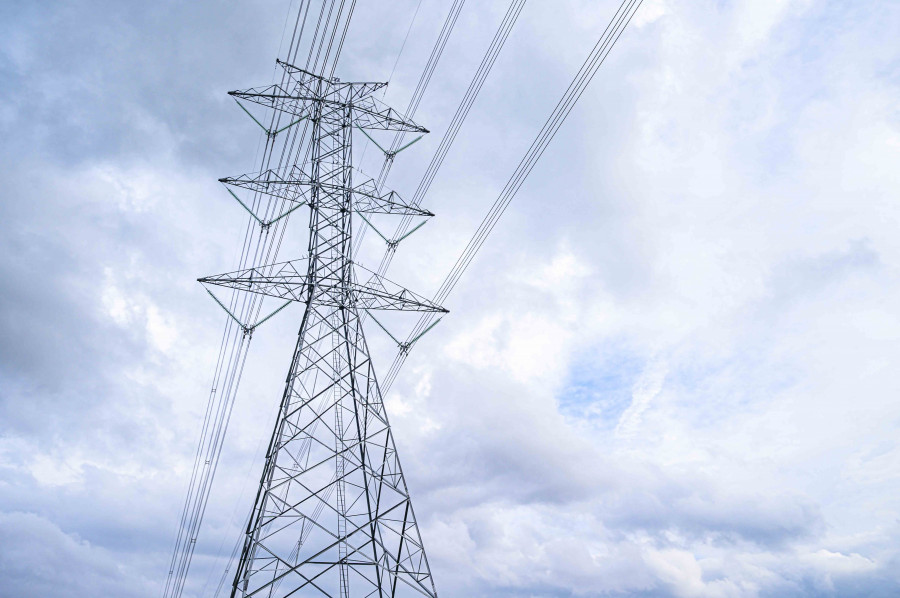
The Nepal Electricity Authority (NEA) has been witnessing reduced power demand in the country, particularly from the industrial sector, which indicates that the country’s economy is slowing down.
On Friday afternoon, the NEA reported the domestic peak demand of 1,396 megawatts of electricity. But, last month, the average domestic demand was in the range of 1,000MW-1,300MW, according to the NEA. Peak hour demand had crossed more than 1,700MW last year.
Officials at the NEA say despite a decrease in temperature, the power demand is not growing as expected, unlike in the past years.
“The main reason behind the overall slump in electricity demand is reduced power demand from the industrial sector,” Kul Man Ghising, managing director of the NEA. “The industrial sector usually consumes around 500MW, but the demand from the sector has decreased by half in recent days.”
The demand from the industrial sector has slumped sharply at a time when the state-owned power utility is increasing high-voltage power connections to industrial units.
The NEA in a statement on Friday said that it had connected Jagdamba Enterprises based in the Bara-Parsa Industrial Corridor with a high voltage power line, enabling it to get as much as 48MW of electricity.
The enterprise, which has been manufacturing steel and iron, can now get an additional 44MW from the existing facility of 4MW through a 66kV transmission line connected to a 132kV sub-station based in Parwanipur, Bara, according to the NEA.
“Power demand usually reflects a country’s economic activities. Based on the current demand, we can assume that the economic activities in the country have sharply slumped,” said Ghising.
Industrialists also said industries were operating far below their capacity as they are struggling to get bank loans. High interest rates don’t help.
“Except for factories related to FMCG [Fast Moving Consumer Goods] and foodgrains, production from others have come down by 50-70 percent,” said Shekhar Golchha, president of the Federation of Nepalese Chambers of Commerce and Industry (FNCCI), an umbrella organisation of the businesses.
“Firms producing construction materials such as iron and steel, the education sector, the automotive sector, consumer electronics, textile and garments, and insurance businesses are witnessing a slowdown,” he added.
Golchha said unavailability of loans not only from banks and financial institutions, but also from the cooperatives played a major role in reduced economic activities.
“The slowdown can be attributed to lack of liquidity in the banking and cooperative sectors as well as due to an increase in the interest rates. This has discouraged people from buying what they want. Inflation has eaten into their buying power,” said Golchha.
In October, the average interest rate for lending stood at 12.19 percent, according to the country’s central bank. Inflation that month was 8.5 percent, slightly down from a 74-month high of 8.64 percent in September, the Nepal Rastra Bank said.
With prices of everything going up internationally, Nepal has also been suffering from high inflation. Nepal is a heavily import-dependent country with imports constituting over 90 percent of the country’s total foreign trade.
The business community says that given the lack of demand for goods in the market, manufacturers have been forced to cut production. The availability of credit fuels market demands, which is not available at the moment.
“The factories are running only one or two shifts a day from three shifts a day earlier,” said Subodh Kumar Gupta, president of the Birgunj Chamber of Commerce and Industries.
Bara-Parsa Industrial Corridor, where Birgunj is situated, is one of the country’s major industry hubs.
According to Gupta, the factories have also been struggling to buy essential raw materials due to non-availability of loans from banks and financial institutions.
However, the central bank is not in a mood to relax the monetary policy and has sought to curtail lending to the private sector as excess lending in the past had led to massive imports, creating pressure on Nepal’s foreign exchange reserves.
The monetary policy aims to reduce growth in the private-sector lending to 12.6 percent in the current fiscal year, 2022-23, from a target of 19 percent growth in the previous fiscal year.
Earlier this month, the central bank also introduced guidelines on working capital (the liquidity levels of businesses for managing day-to-day expenses covering inventory, cash, accounts payable, accounts receivable, and short-term debt.)
As per the NRB guidelines, a business enterprise that wants to receive more than Rs20 million in working capital, cannot get loans worth more than 25 percent of its estimated annual turnover. In order to provide working capital of less than Rs 20 million, the maximum limit has been set at 20 percent of the estimated annual turnover.
“Due to these guidelines, you cannot get extra loans without first repaying the existing ones. It is also difficult to sell properties to pay the loans, as it is currently hard to find buyers,” said Gupta.
The market is not seeing the usual uptick, say businesspersons, as would for instance be evident during political campaigns ahead of the elections.
The country held federal and provincial elections on November 20. Generally, elections are associated with frantic spending as the government pumps billions of rupees into the market. Candidates too open their wallets to entice voters, which lights up the market.
The FIFA World Cup, a four-yearly sporting extravaganza, is also underway in Qatar. Usually, the demand for consumer electronics, particularly television sets, grows sharply during such sporting events. Football fans visit restaurants to watch games, boosting the restaurant business and by extension the sale of alcoholic products.
Golchha, whose company also deals in consumer electronics, said that there is almost zero interest in purchasing televisions sets even though the World Cup is on. “Sales of television sets have not gone up, which usually happens during such big sporting events,” said Golchha.












